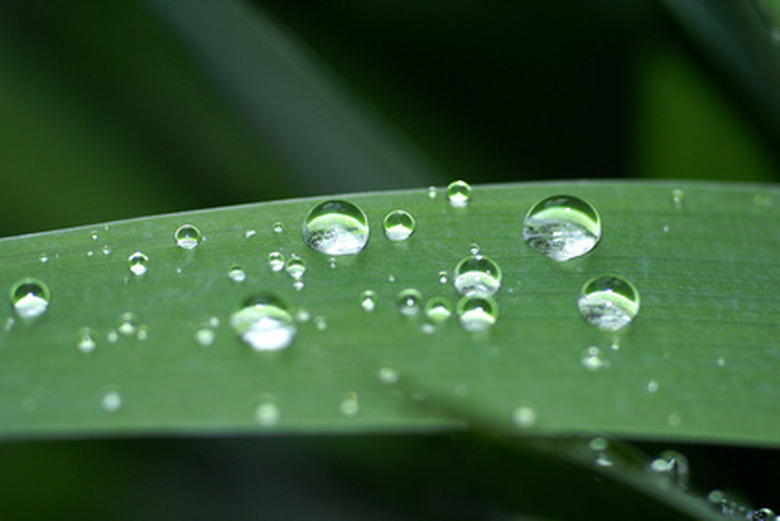Why Is The Water Cycle Important To Humans & Plants?
All life is dependent upon water. Water makes up 60 to 70 percent of all living matter and humans cannot live without drinking water for more than a week. The water cycle, or hydrologic cycle, distributes fresh water all over the earth's surface.
Process
Process
The water cycle is made up of six stages. Evaporation is the process where water in its liquid state turns into a gas and rises into the atmosphere — vapor. Condensation occurs when water vapor turns into tiny droplets of liquid — clouds. Precipitation is the process where tiny condensed water droplets amalgamate and fall back to the earth in liquid form — rain. Transpiration is the process where water is soaked up a plant's roots and evaporates out the leaves. Infiltration is the process where water soaks into the ground. Surface runoff occurs when gravity and solar heat transfer water around the earth's surface via rivers, streams, lakes, melting ice and the oceans.
Purification
Purification
Evaporation and infiltration benefit human, animal and plant life by purifying water. When water evaporates, the pollutants and sediments in it are left behind. Even aquatic life need water purified, as salt water must be within certain pH and saline ranges. As water undergoes infiltration, the ground purifies it of pollutants and contaminants.
Distribution
Distribution
Perhaps most important, the water cycle distributes water — though unevenly — all over the earth's surface. This is important because if water was not distributed, gravity would push it all into the lowest places — the oceans. The water cycle continually feeds fresh water to all life on the planet: humans, animals and plants.
Cite This Article
MLA
McQuade, Tim. "Why Is The Water Cycle Important To Humans & Plants?" sciencing.com, https://www.sciencing.com/water-cycle-important-humans-plants-7452871/. 13 March 2018.
APA
McQuade, Tim. (2018, March 13). Why Is The Water Cycle Important To Humans & Plants?. sciencing.com. Retrieved from https://www.sciencing.com/water-cycle-important-humans-plants-7452871/
Chicago
McQuade, Tim. Why Is The Water Cycle Important To Humans & Plants? last modified March 24, 2022. https://www.sciencing.com/water-cycle-important-humans-plants-7452871/
